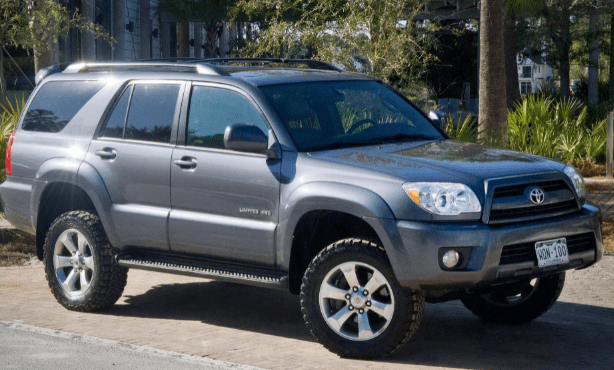[Working Solution] Isuzu 4L30E Transmission Problems!
Last Updated on September 25, 2023 by Robert Wilson
If you’re driving an Isuzu with a 4L30E transmission, you may have noticed some problems. The 4L30E is a common transmission in Isuzus from the early 1990s, and while it’s generally a reliable unit, it’s not without its issues. Here are some of the most common problems owners report:
1. Slipping gears: This is probably the most common complaint about the 4L30E. If your transmission is slipping out of gear, it could be due to a variety of factors, including low fluid levels, worn clutch packs or an internal leak.
2. Rough shifting: Another common issue is rough shifting, which can be caused by the same factors as slipping gears.
In addition, dirty fluid or debris in the valve body can also cause shifting problems.
3. delayed engagement: This issue is often caused by low fluid levels or a faulty shift solenoid. If you notice that your transmission takes longer than usual to engage into gear, check your fluid level and have your shift solenoids checked by a qualified technician.
If you’re driving an Isuzu with a 4L30E transmission, you may have already experienced some problems. This transmission is known for being finicky and prone to failure, especially in older models. If your 4L30E transmission is giving you trouble, here are a few things you can do to try and fix the problem.
First, check the fluid level. The 4L30E transmission requires special fluid that can be difficult to find. If the fluid level is low, it could be causing problems with shifting or even leading to complete failure.
Topping off the fluid may help solve the problem.
If the fluid level is fine, the next step is to check for leaks. These transmissions are notorious for leaking, so even a small leak can cause big problems.
Look for any signs of leakage around the seals and gaskets. If you see any fluids on the ground beneath your car, it’s likely that your 4L30E transmission is the culprit.
Finally, if neither of these solutions fixes the problem, it’s time to take your car to a mechanic or Transmission specialist.
These professionals will be able to diagnose and repair any issues with your 4L30E transmission. Don’t delay in getting help – a failed transmission can be expensive to replace!
4L30-E Transmission – Band Adjustment – Transmission Repair
What Vehicles Use the 4L30E Transmission?
The 4L30E transmission is a four-speed automatic transmission that was manufactured by General Motors. It was introduced in the early 1990s and was used in a variety of GM vehicles, including the Chevrolet Astro van, Cadillac DeVille, Oldsmobile Silhouette and Pontiac Trans Sport. The 4L30E was also used in some European models, such as the Opel Omega and Vauxhall Carlton/Vectra.
In 2000, GM updated the 4L30E with a new electronically controlled transmission control module (TCM). This update improved shift quality and reliability. The 4L30E continued to be used in GM vehicles until 2006 when it was replaced by the 6L80/6L90 six-speed automatic transmissions.
How Much Transmission Fluid Does a 4L30E Take?
The 4L30E is a General Motors automatic transmission designed for rear-wheel drive vehicles. It was first introduced in 1991 and was GM’s first electronically controlled four-speed automatic transmission. The 4L30E is a relatively small transmission, measuring just 29.92 inches long and 21.77 inches wide.
It weighs approximately 143 pounds dry (without fluid).
The 4L30E has a total fluid capacity of 11 quarts (10.4 liters) when completely full. This includes the amount of fluid in the torque converter as well as the transmission itself.
When changing the fluid or checking the level, it is important to have the vehicle at operating temperature and the engine running so that you can get an accurate reading.
How Much Fluid Does a 4L30E Hold?
The 4L30E is a transmission made by General Motors. It was introduced in 1991 and was used in various GM vehicles until 2005. The 4L30E has a total fluid capacity of 8.5 quarts.
This includes the amount of fluid in the torque converter, which is usually about 2 quarts.
What Causes Premature Transmission Failure?
There are many causes of premature transmission failure, but the most common is overheating. When a transmission overheats, the fluid breaks down and can no longer lubricate and cool the system. This causes the gears to grind and wear out prematurely.
Overheating can be caused by excessive use, such as towing or hauling heavy loads, or by inadequate cooling, such as a failing cooling fan or radiator.
Other causes of premature transmission failure include incorrect fluid level, contamination of the fluid with water or debris, and mechanical problems such as worn bearings or gears.

Credit: www.youtube.com
Isuzu Transmission Problems
If you’re the owner of an Isuzu SUV or pickup truck, you may be experiencing transmission problems. Many owners have complained about issues with their vehicles’ transmissions, reporting that they’ve experienced shifting problems, delayed engagement, and even complete failure. While Isuzu has issued a recall for some vehicles with transmission problems, many owners are still struggling to get their trucks repaired.
If you’re having trouble with your Isuzu’s transmission, there are a few things you can do to try to get it fixed. First, check to see if your vehicle is included in the recall; if it is, then you should be able to get it repaired for free at a dealership. If your truck isn’t part of the recall, then you’ll need to take it to a mechanic or Transmission specialist for diagnosis and repair.
Be prepared to pay for these services out-of-pocket, as most warranty companies won’t cover transmission repairs.
In the meantime, there are a few things you can do to try and prevent further damage to your transmission. Avoid hard acceleration and sudden stops whenever possible, and have your transmission checked regularly by a professional.
If you keep an eye on your truck’s transmission and catch any problems early on, you may be able to avoid more serious (and expensive) repairs down the road.
Conclusion
The Isuzu 4L30E transmission is a four-speed automatic transmission that was used in Isuzu and General Motors vehicles from 1986 to 2007. The 4L30E was a successor to the earlier 3L30 transmission and was used in a variety of GM and Isuzu vehicles, including the Buick Rainier, Chevrolet TrailBlazer, GMC Envoy, Oldsmobile Bravada, Saab 9-7X, and Saturn Vue.
The 4L30E transmission is prone to a few common problems, chief among them being fluid leaks and premature wear of the clutches and gears.
Transmission fluid leaks are the most common problem with the 4L30E and can be caused by a number of factors, including loose or damaged seals/gaskets. Clutch wear is another common problem with the 4L30E, typically caused by excessive heat buildup due to poor cooling or incorrect fluid level.
If you own a vehicle equipped with the 4L30E transmission, it’s important to be aware of these common problems so you can take steps to prevent them (e.g., regularly checking fluid levels).
If your transmission does develop problems, it’s important to have it repaired as soon as possible by a qualified technician; otherwise, you risk further damage that could lead to an expensive repair bill.


